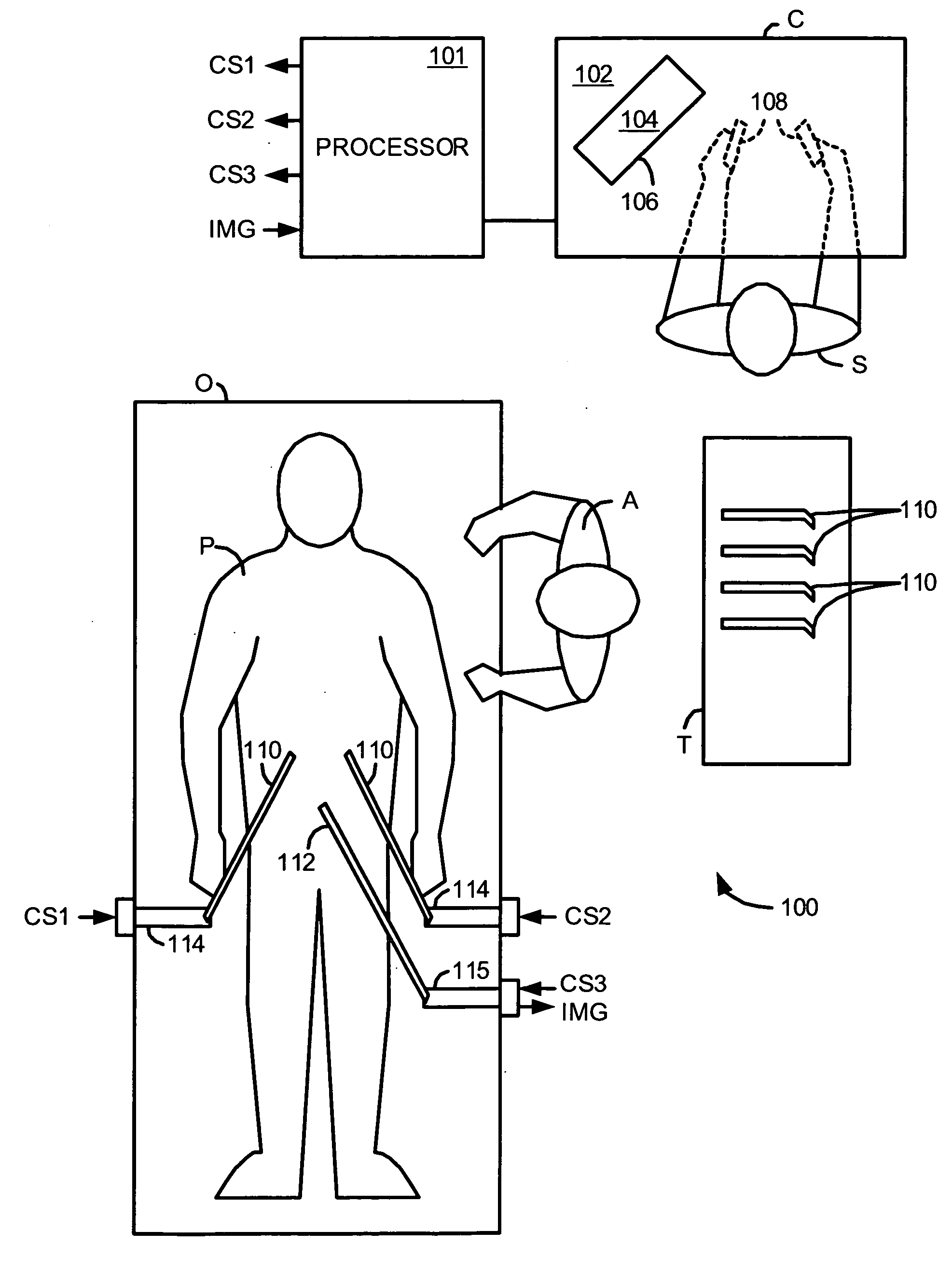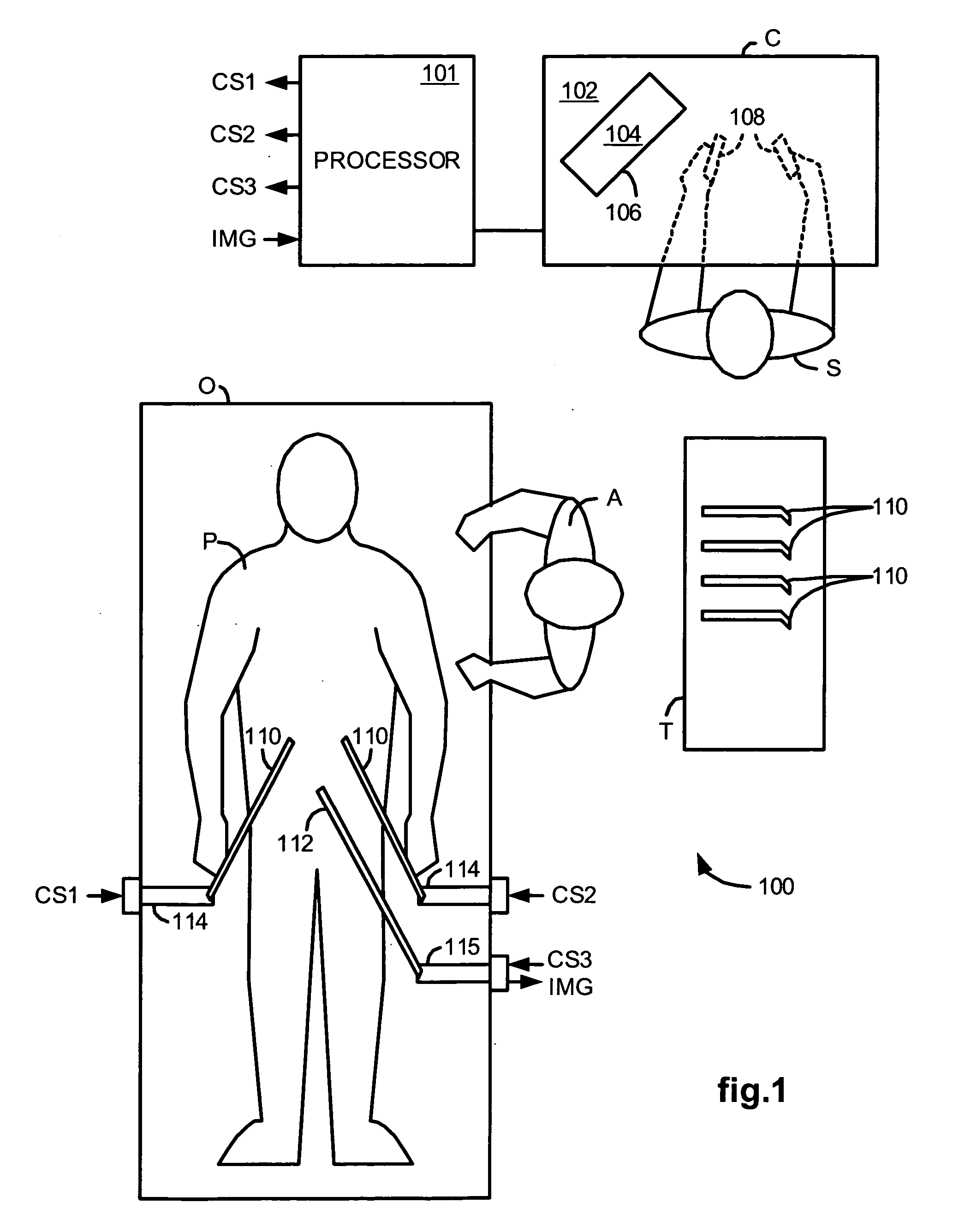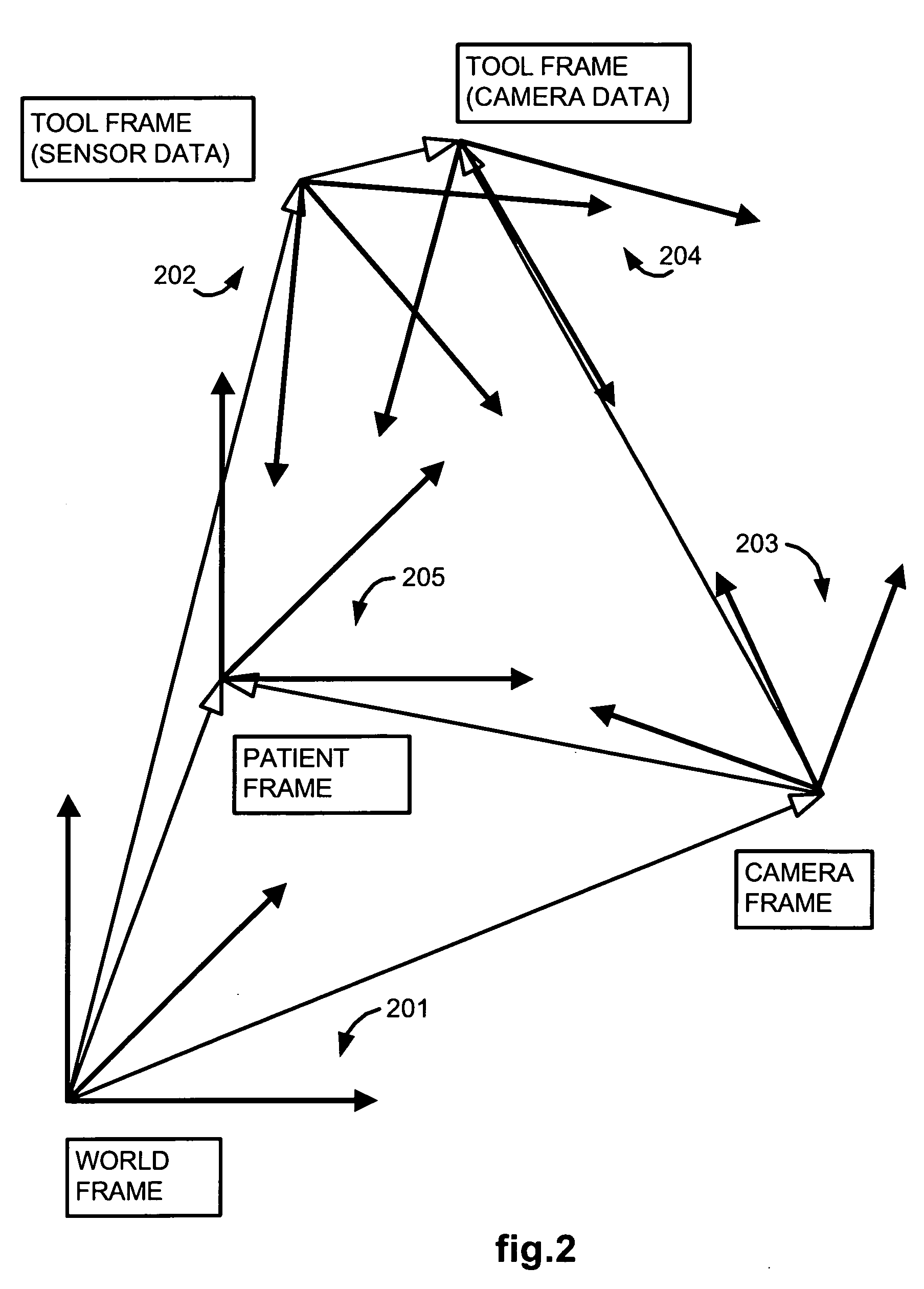Methods and system for performing 3-D tool tracking by fusion of sensor and/or camera derived data during minimally invasive robotic surgery
- Summary
- Abstract
- Description
- Claims
- Application Information
AI Technical Summary
Benefits of technology
Problems solved by technology
Method used
Image
Examples
Embodiment Construction
[0048]FIG. 1 illustrates, as an example, a Minimally Invasive Robotic Surgical (MIRS) system 100 including a Console (“C”) utilized by a Surgeon (“S”) while performing a minimally invasive diagnostic or surgical procedure, usually with assistance from one or more Assistants (“A”), on a Patient (“P”) who is lying down on an Operating table (“O”).
[0049] The Console includes a support 102, a monitor 104 for displaying an image of a surgical site to the Surgeon, and one or more control devices 108. The control devices 108 may include any one or more of a variety of input devices, such as joysticks, gloves, trigger-guns, hand-operated controllers, voice recognition devices or the like.
[0050] The Surgeon performs a procedure by manipulating the control devices 108 which in turn, cause robotic mechanisms 114 to manipulate their respective removably coupled instrument or tool assembly 110 (hereinafter simply referred to as a “tool”) through a minimally invasive incision in the body of the...
PUM
 Login to View More
Login to View More Abstract
Description
Claims
Application Information
 Login to View More
Login to View More - R&D
- Intellectual Property
- Life Sciences
- Materials
- Tech Scout
- Unparalleled Data Quality
- Higher Quality Content
- 60% Fewer Hallucinations
Browse by: Latest US Patents, China's latest patents, Technical Efficacy Thesaurus, Application Domain, Technology Topic, Popular Technical Reports.
© 2025 PatSnap. All rights reserved.Legal|Privacy policy|Modern Slavery Act Transparency Statement|Sitemap|About US| Contact US: help@patsnap.com



